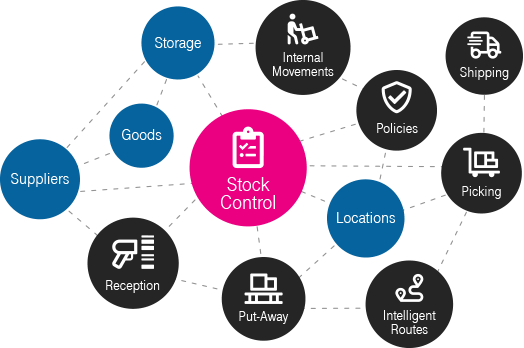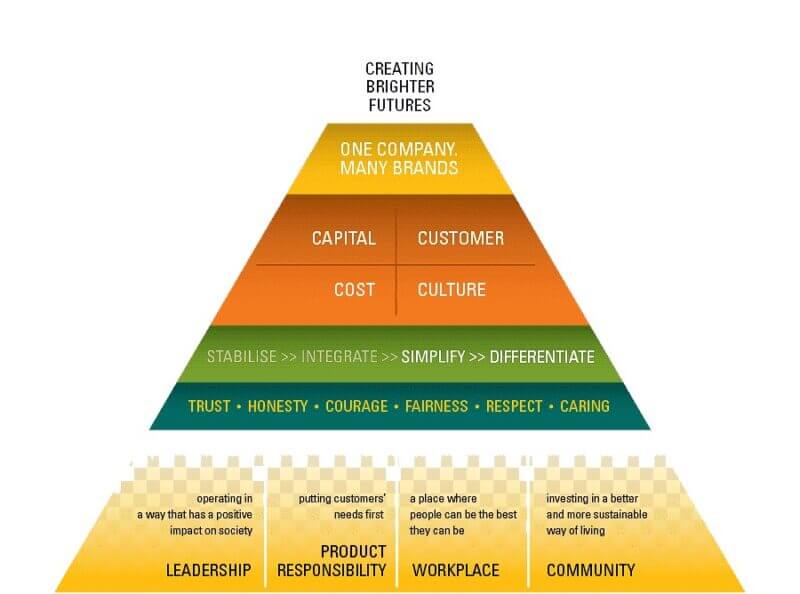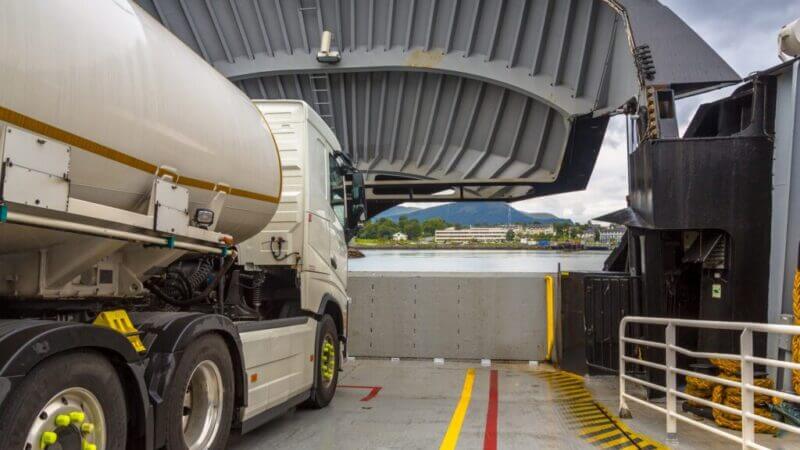You don’t need to be a corporate giant to save big on supply chain costs. This article tries to open eyes regarding significant savings opportunities for companies of all sizes and across all industries. The biggest saving opportunity? Optimize stock locations & network. Save big on supply chain storage location costs. I will tell you why and how.
Storage and distribution is potentially complex and costly, not only because the order size and value can be quite low (and so the cost for distribution as a percentage of sales is high), but also, in case of e-commerce fulfilment en direct to consumer (DTC), because the customer is often not at home. This leads to redelivery and even more costs.

It is generally stated that reducing the number of square meters and the number of warehouses leads to a reduction in total costs. Though in specific cases, increasing the number of warehouses can lead to cost reductions.
MAPPING OUT YOUR SUPPLY NETWORK DESIGN AND OPTIMIZE
The design and management of a company (or corporate) manufacturing system plus coherent distribution system is one of the biggest challenges in logistics and (facility) management. Companies want to design, try and evaluate different configurations for their logistic networks and strive to find the smartest and most intelligent way. Which is mostly not easy… This means that the entire supply chain must be mapped efficiently and effectively.
Normally, companies minimize costs by optimizing their production and distribution locations. Important elements here are: the allocation of customer demand to production and/or distribution centers, the inbound and outbound transport activities, the product flows between manufacturing and/or storage facilities, the reverse logistics activities, etc.
Full optimization of the supply chain is achieved by integrating strategic, tactical, and operational decision-making in terms of the design, management and control of activities. The management has to make the following decisions: the number of facilities (e.g. warehousing systems, distribution centers), the choice of their locations and the assignment of customer demand to these locations. Also incorporate tactical decisions regarding inventory control, production rates, and service-level determination in a random environment must also be taken into account in the decision-making process.
Nowadays, warehouses are increasingly an active part of a chain and contribute to efficiently designed logistic flows. The choice of location of a warehouse therefore has a direct influence on the degree of efficiency. Organizations are aware of this which results in a reversal in the market with the come-back of a warehouse design, transformed to one or more warehouse locations close to the customer(s). Decentralized locations, centrally controlled.
The optimal location is determined by the most favorable interaction of the relevant parameters. In order to achieve an optimal solution, the mathematical process of non-linear programming (NLP) can be used besides ‘flair’. Parameters that are distinguished: customer need parameter, personnel parameter, logistical parameter, housing parameter and invested power parameter (out of scope in this blog).

Today there are a lot of (AI/ ML based) tools helping defining the best supply chain network including stock locations and the different stock levels. For example look at Aera Technology (HQ in USA), Kinaxis (HQ in USA) or bluecrux (HQ in Europe/ Belgium). By using this tools you are able to create the digital twin of your supply chain and you can play with parameters, what-if- and alternative scenarios. They deliver the technology that enables a cognitive operating system which connects you to your business and orchestrates your operations, autonomously.
A solution for the rapid accommodation of your stock requirements and locations
Year to date, it is desirable and possible to make a warehouse design more flexible, since the international rise of ‘Airbnb concepts’ for warehousing.
THINK ABOUT HIRING A FLEXIBLE WAREHOUSE LAYER
Once you have ‘a tactical or strategic idea’ of what the optimal warehouse locations should be within your supply chain network, an ‘On-Demand Warehousing Platform’ can surely help and provide a solution for the rapid accommodation of your stock requirements and locations. Instead of investing in our own warehouses, nowadays it is a good alternative to hire external warehouses. For example Flexe (HQ in USA) and Stockspots (HQ in Europe/ The Netherlands). Both companies are a marketplace that connects shippers (owners of goods) with warehouse companies that temporarily have unused storage space and logistic services at their disposal.
Three segments have emerged in this market. (1) inventory overflow, (2) e-commerce fulfilment and (3) direct delivery to consumers
These companies use smart web web portals in the Cloud with whom they create a new and sustainable warehouse network in their operating area. They are therefore ‘matchmaker’ in the supply and demand of (temporary) warehouse space and uses online real-time insights to provide the best matches.
(1) INVENTORY OVERFLOW
The warehouse capacity you need is hard to predict. External factors, seasonal patterns, weather conditions, commodity trading, currency fluctuations, changes within world politics or other events increase pressure on the supply chain and influence the capacity needs of your organisation. Having limited control over these factors is frustrating, but what if you could continuously adapt the change in capacity needs within your company? Flexible, on-demand warehousing is the solution.
(2) E-COMMERCE FULFILMENT – MULTI BRAND
Starting out selling into Europe asks for a future forecasted warehouse strategy. Usually, when foreign suppliers start delivery overseas, they will only ship per order directly to the consumer. This results in the waste of a lot of time and money. But, what if you were always able to scale your warehousing and fulfillment up and down?
Join the network of European warehouse providers and easily (re)stock your goods at the best spots near your foreign customers as you sell them. On demand warehousing guarantees you the flexibility and speed you wish to have while developing your new market: Same or Next Day deliveries at low or no shipping costs included.
(3) DIRECT DELIVERY TO CONSUMERS – SINGLE BRAND
As online retail has grown, companies have started leveraging their logistics and transportation resources to provide direct-to-consumer delivery (or DTC) for their clients. In recent years, for example the consumer product goods (CPG) industry has struggled to sustain growth amid flat sales. The reasons are many: the strengthening of powerful retailers, the growth of e-commerce channels, and the change in consumers’ needs and priorities.
In response, manufacturers have focused on cost-cutting and trimming brands while seeking new avenues for growth. One avenue that holds promise for some manufacturers is direct-to-consumer (DTC) strategies in which the manufacturers sell their products directly to consumers using e-commerce, without going through intermediaries like wholesalers, retailers or physical.
WHY HAS THIS WAREHOUSE SHELL BECAME SO POPULAR
On the one hand, the supply chain is becoming more volatile. On the other hand, shippers often conclude long-term warehouse contracts, which means that there is little flexibility to scale up or down the use of storage.
There is little flexibility to scale up or down, or there is a loss of turnover because there is no stock capacity available at the right time and/or location
The result is unnecessary costs for warehouse space and services that are only used at peak times of the year. Or there is, for example in case of a new client, a loss of turnover because there is no capacity available at the right time and/or location. On demand warehousing provides an user-friendly marketplace that can make the right match between supply and demand throughout Europe, any time.
The advantages:
- User friendly application;
- Quotations are made online;
- It is a pay-per-use system;
- Maximum scalability according to the warehouse needs;
- Promotes sustainability by reducing idle warehouse space and new constructions;
- The smart IT solution has a control tower and dashboard to keep a close eye on the activities and non-conformities;
- This means that a user always has insights into their stock and continuously control over its warehouse activities.
ON DEMAND WAREHOUSING IS FLEXIBLE, SCALABLE AND SUSTAINABLE
Author is Harry Luijk – Logistics & Supply Chain Professional & Partner at Merlyn Consult.






